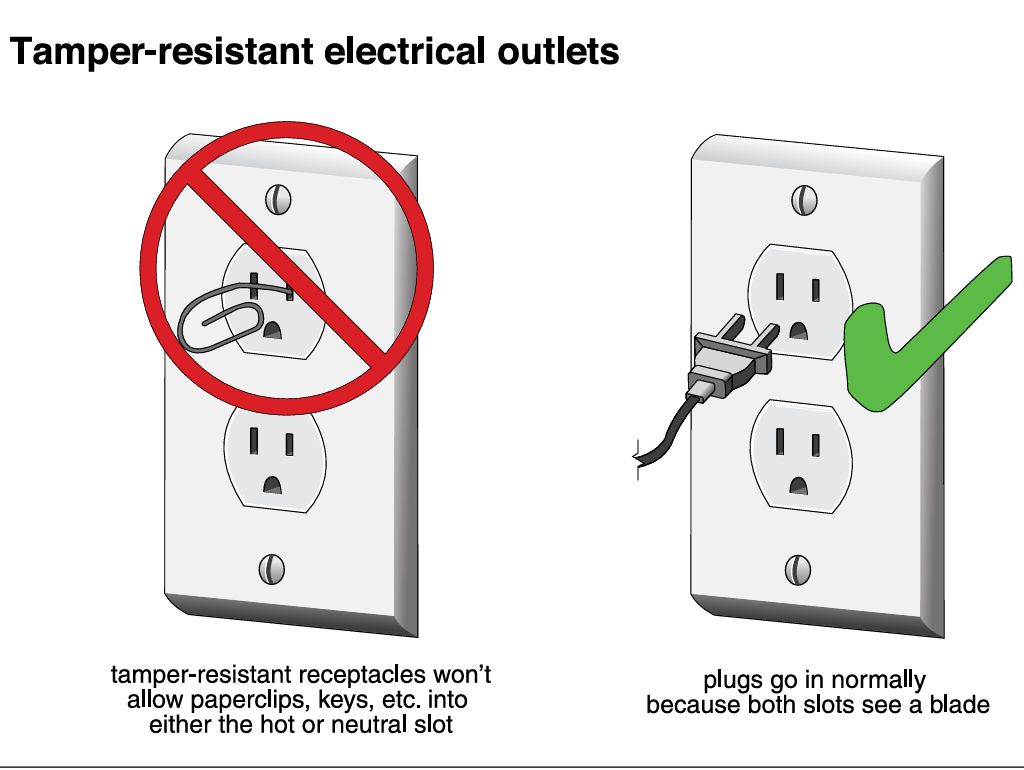When it comes to home safety, one area that often gets overlooked is electrical outlets. In homes with young children, these outlets can pose a significant risk of electrical shock. Fortunately, tamper-resistant receptacles (TRRs) offer a simple yet effective solution. But what exactly are these special outlets, and why should you consider them for your home?
What Are Tamper-Resistant Receptacles (TRRs)?
Tamper-resistant receptacles look very similar to standard electrical outlets but come with an added layer of protection. Inside each outlet are spring-loaded shutters designed to block foreign objects from being inserted. These shutters only open when equal pressure is applied to both slots simultaneously—like when you insert a standard plug. This mechanism prevents children from pushing objects such as keys, paperclips, or toys into the outlet, reducing the risk of electrical shock.
How Do Tamper-Resistant Receptacles Work?
The secret to tamper-resistant outlets is in their built-in shutters. The slots where you normally plug in electrical devices are covered by these shutters, which only open when both prongs of a plug press on them at the same time. If a child tries to insert a single object, like a toy or hairpin, into one slot, the shutters stay closed, blocking access to the electrical contacts. This ensures that only proper electrical plugs can be inserted into the outlet.
Why Are Tamper-Resistant Receptacles Important?
Electrical outlets are one of the most common sources of accidental injuries for young children. According to the National Fire Protection Association (NFPA), thousands of children are treated for electrical injuries each year, many of which result from them sticking objects into outlets. The simple addition of tamper-resistant receptacles can prevent many of these accidents.
Code Requirements for Tamper-Resistant Receptacles
Recognizing the importance of this safety feature, the National Electrical Code (NEC) has mandated tamper-resistant receptacles in newly constructed homes since 2008. This means that any new residential construction or major electrical upgrade must include tamper-resistant outlets in all areas accessible to children, such as living rooms, bedrooms, and hallways. Older homes may not have this feature, so it’s worth considering an upgrade, especially if you have or plan to have children.
Common Misconceptions About TRRs
Some people worry that tamper-resistant receptacles will make it difficult to plug in devices. However, TRRs are designed to operate just like regular outlets. The shutters are specifically engineered to allow standard plugs to be inserted without any extra force. While the internal mechanism may feel slightly different from traditional outlets, most people quickly adapt to using them without any issues.
Benefits of Installing Tamper-Resistant Receptacles
- Enhanced Child Safety: The most obvious benefit is the added protection for children. By preventing objects from being inserted into the outlet, TRRs dramatically reduce the risk of electrical shock and injury.
- Peace of Mind: Parents can relax knowing that their home is safer for their kids. TRRs offer ongoing protection without needing to constantly monitor outlets or install and remove plastic outlet covers.
- Convenience: Unlike outlet covers that can be cumbersome and require removal every time you want to use the outlet, tamper-resistant receptacles provide built-in protection with no need for additional safety devices.
- Building Code Compliance: For anyone considering building a new home or making significant renovations, TRRs are required by the NEC, ensuring your home meets modern safety standards.
- Long-Term Safety: While outlet covers or other childproofing methods can wear down or be removed over time, tamper-resistant receptacles are a permanent solution that provides safety for years to come.
Do Older Homes Need Tamper-Resistant Receptacles?
If you live in a home built before 2008, your outlets may not be equipped with tamper-resistant technology. While these outlets are not required by law for older homes, upgrading to TRRs is a smart choice—especially for families with young children or those expecting to have kids in the future.




